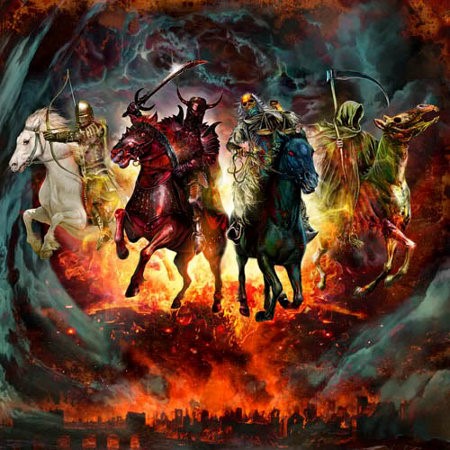Woke is an old word which has now taken on a new life. It was first used in the 1940s by black Americans but became increasingly popular as a result of the Black Lives Matter movement after the deaths of Michael Brown and George Floyd. BLM activists use the word to alert people to keep watch for police brutality. In other words, “wake up” to the systemic racism which continues as a result of America’s inability to expiate its original sin of slavery.
As often is the case, “woke” was appropriated from the black community by the white community to state its own grievances. And “woke” ‒ once loosed ‒ is not easily cabined. “Woke” is now a more generic slang word associated with “progressive” causes such as LGBTQ+ rights, feminism, environmentalism and, as will be seen in a few paragraphs below, the audacity of a non-ethnic person in giving advice on how to prepare ethnic recipes (yes, you read that right).
Without question, the most “woke” governmental body in the United States is the San Francisco School Board. A previous blog on this site introduced readers to this group. The School Board just passed a Resolution to rename 44 schools with Washington, Jefferson, Lincoln, Roosevelt and even current U.S. Senator Feinstein getting the boot.
The Resolution which passed by a vote of 6-1 on January 27, 2021 provided that the names were being changed because they were historical figures responsible for “…the subjugation and enslavement of human beings; or who oppressed women, inhibiting societal progress; or whose actions led to genocide; or who otherwise significantly diminished the opportunities of those among us to the right to life, liberty, and pursuit of happiness…”
It is, at best, ironic that the School Board said its actions promoted “the opportunities among us to the right to life, liberty and the pursuit of happiness.” Those words are from the Declaration of Independence which was penned by Thomas Jefferson whose name is now being stricken from one of the schools. You really can’t make this stuff up.
The politicians in San Francisco are so “woke” that no one, including the Mayor, objects to the renaming. Meanwhile, the public schools in San Francisco, both the renamed ones and the others, remain closed with no apparent plan to reopen anytime soon. As Mark Twain said: “First God made idiots. That was for practice. Then He made School Boards.”
The rap on Lincoln, according to teacher Jeremiah Jeffries, is that he was chosen based on “his treatment of First Nations peoples.”
The Cherokee Nation, after dithering for almost 5 decades (explained over the years as having “no official position”) just “woke up” and requested that Jeep change the name of the Grand Cherokee. The Cherokees may do better copying the Seminole Tribe.
Florida State University retains the name Seminoles, complete with the head dress costumed brave who rides a horse and throws a ceremonial spear into the turf prior to football games. The Seminole Tribe was happy to let this tradition continue, proving once again that money is a great leveler. Suffice it to say that the Seminoles would have driven an extraordinarily hard bargain for Manhattan.
All of which brings us to one of the most bizarre instances of “woke” from the world of food. Hamantaschens are triangular cookies eaten during the Jewish Festival of Purim (celebrated a few weeks ago). In 2015, Bon Appétit published an article by food writer Dawn Perry on how to make a really tasty hamantaschen. Recently, Abigail Koffler was researching hamantaschen fillings and came upon Perry’s article. She was not pleased and turned to Twitter (where else) to state “that traditional foods need to be updated by someone from that tradition.” Dawn Perry’s sin: she is a Gentile.
Bon Appétit is a part of the Condé Nast mass media empire. Its brands include Architectural Digest, The New Yorker, Vogue, Vanity Fair, GQ and attract over 72 million consumers in print, 394 million in digital and 454 million across social platforms.
The title of this post copies the title of Bret Stephen’s must read Opinion column in the New York Times of February 23, 2021. Within hours of the Koffler tweet Condé Nast responded as recounted in the Stephen’s piece:
“The original version of this article included language that was insensitive toward Jewish food traditions and does not align with our brand’s standards,” the editor wrote. “As part of our Archive Repair Project, we have edited the headline, dek, and content to better convey the history of Purim and the goals of this particular recipe. We apologize for the previous version’s flippant tone and stereotypical characterizations of Jewish culture.”
…What Bon Appétit blithely calls its “Archive Repair Project” is, according to The Associated Press, an effort to scour “55 years’ worth of recipes from a variety of Condé Nast magazines in search of objectionable titles, ingredient lists and stories told through a white American lens.”
There’s no way to be certain about this but I wager that Dawn Perry’s hamantaschens are tastier than Abigail Koffler’s and that she would be better company. But one thing is surely certain: Condé Nast’s groveling over the Perry article is appalling.
Winston Churchill once said “a nation that forgets its past has no future.” Whatever their now declared sins, Washington, Jefferson and Lincoln are our past and the reasons we have a present and a future. Without Washington, the Revolutionary War would not have been won; without Jefferson there would be no Declaration of Independence nor the Louisiana Purchase; without Lincoln there would be no United States; without Theodore Roosevelt there would be no National Park System and without Franklin Roosevelt there would be no Social Security program or regulation of Wall Street.
Is there anything good about the current “woke” sensibility? With respect to the business of “names” it is clear that certain names should be ditched and others should be elevated. A rough sampling:
- Fort Bragg in North Carolina and Fort Hood in Texas are huge military bases. Both are named after Confederate generals. We should never give honor to those who fought against the United States. A law school classmate has suggested that the business of renaming strikes him as “empathy on the cheap.” That may be, but I remain convinced that federal military institutions should not honor Confederate rebels.
- Whatever happened to the elevation of women? Susan B. Anthony’s face appears on a one dollar coin which is rarely used. Surely more can be done to honor women who were held back for so long but who have been so important to the success of the country. Identifying those women and finding appropriate ways to honor them would be a good “woke” project. One woman to be considered is Lois Wilson who was the co-founder of Alcoholics Anonymous Family Groups. Her more famous husband Bill was co-founder of Alcoholics Anonymous. These groups have proven to be the most effective self-help programs ever devised.
- What about Frederick Douglass and Harriet Tubman? Douglass has a number a public schools named after him and truly more can be done but Tubman has pretty much been slighted. That was so until the Obama Administration decided to place Harriet on the $10 bill in lieu of Alexander Hamilton. That bonehead suggestion was altered only because of the success of the Broadway show “Hamilton.” Now Harriet is being proposed for the $20 bill in lieu of Andrew Jackson. As between Hamilton, who is probably one of the least famous but one of the most important Founding Fathers and Jackson, there is no choice. Put Harriet on the $20 or let her share it with Jackson.
The principal problem with most of the current “woke” movement is that it scours the past for mistakes instead of trying to claim the future. It is the future where inclusion is important and past mistakes can be remedied.
However, there is one thing I do know for sure: a cookie whisperer should not be the subject of derision.
Shame, today thy name is Condé Nast.
P.S. A college roommate recently exposed me to a singer named Eva Cassidy. Twenty-five years ago (January 1996) Eva and a fellow bandmate secured enough money to make a record while they performed a live set at a small but famous music venue in Washington D.C. known as Blues Alley.
Eva would be dead before that year was out. The record from that session has sold over 10 million copies, mostly as a result of word of mouth.
The following is a documentary about Eva, her band and that record. Her marvelous voice is on full display. Live at Blues Alley











